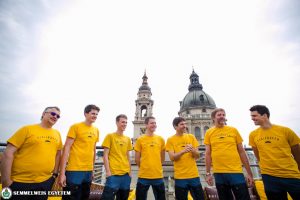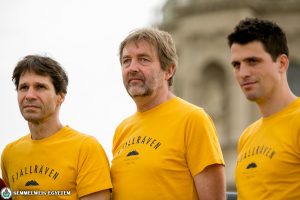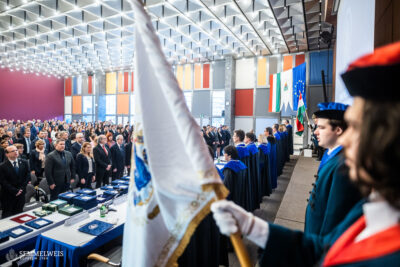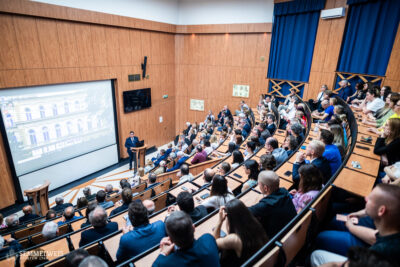 The Medical University of Vienna, which belongs to the world’s leading lung transplantation centres, organizes an international expedition with the participation of lung transplant patients for the first time. Two Hungarian lung transplant patients will also be members of the team that climbs Kilimanjaro. Among the four other Hungarian accompanying members there are physicians and physiotherapists in the team, too. Dr. György Lang will also participate in this expedition as a member of the doctors’ team. Dr. Lang was the leader of the team of the first lung transplantation in Hungary.
The Medical University of Vienna, which belongs to the world’s leading lung transplantation centres, organizes an international expedition with the participation of lung transplant patients for the first time. Two Hungarian lung transplant patients will also be members of the team that climbs Kilimanjaro. Among the four other Hungarian accompanying members there are physicians and physiotherapists in the team, too. Dr. György Lang will also participate in this expedition as a member of the doctors’ team. Dr. Lang was the leader of the team of the first lung transplantation in Hungary.
The members of the expedition intend to climb the highest mountain of Africa, Kilimanjaro (5895 m) within eight days. Altogether 12 transplant patients and their accompanying team members participate in this international expedition, among whom there are Hungarian, Austrian, Romanian, Slovenian, Italian and Greek participants.
 “In Vienna 120 lung transplantations are carried out yearly on patients with various nationalities. Those transplant patients were chosen for the expedition, who were physically strong enough and who were interested in being part of this project.”, Dr. Peter Jaksch, head of the lung transplantation programme in Vienna, chief organizer of the Kilimanjaro expedition expressed.
“In Vienna 120 lung transplantations are carried out yearly on patients with various nationalities. Those transplant patients were chosen for the expedition, who were physically strong enough and who were interested in being part of this project.”, Dr. Peter Jaksch, head of the lung transplantation programme in Vienna, chief organizer of the Kilimanjaro expedition expressed.
Dr. Jaksch emphasized the importance of having a detailed action plan so that the water, the medications and the vaccination can be brought up to the mountain properly. As he expressed, the lung transplant patients and the other team members started preparing for the expedition six months earlier than the journey. During this time the participants had the opportunity to have consultations with physicians, physiotherapists and professionals specialized in vaccination.
In order to reach the summit, the most suitable route was chosen, which can be accomplished with an 80-90% success rate. The route is of a moderate elevation and of a middle difficulty level, therefore it can be completed successfully within eight days. Having additional tours for acclimatization might be required as well, but these are calculated in the estimated time of the expedition. Meanwhile the hiking teams are continuously monitored in order to avoid the typical symptoms of being on a high elevation. As Dr. Jaksch highlighted, in case any of the team members are having such symptoms, they can go to a lower elevation and change the plan.
“In case this expedition will be successful, that will be a true miracle. Such patients will reach the summit who had needed extra oxygen earlier, but now they will conquer one of the highest mountains of the world with their own strength and stamina.”, Dr. Jaksch said.
 As Dr. György Lang, Director of Semmelweis University’s Department of Thoracic Surgery at the National Institute of Oncology emphasized, this is an international expedition, which clearly shows that transplantation does not have boundaries. Dr. Lang also talked about the Eurotransplant membership of Hungary and he highlighted its importance: it is visible on a daily basis how much benefit this brings to patients. According to him it is very important that transplant patients are climbing a mountain together with those physicians who carry out the transplantations. He also added that none of the expedition members have had climbed a mountain of this hight yet.
As Dr. György Lang, Director of Semmelweis University’s Department of Thoracic Surgery at the National Institute of Oncology emphasized, this is an international expedition, which clearly shows that transplantation does not have boundaries. Dr. Lang also talked about the Eurotransplant membership of Hungary and he highlighted its importance: it is visible on a daily basis how much benefit this brings to patients. According to him it is very important that transplant patients are climbing a mountain together with those physicians who carry out the transplantations. He also added that none of the expedition members have had climbed a mountain of this hight yet.
“With this expedition we aim at checking the limits of science as well. A transplanted lung operates differently in many aspects, since on the occasion of a transplantation, lymph circulation and autonomic conditioning are not restored. The measurements collected during the expedition can be compared to the scores of the control group, the accompanying members of the team, which can display exciting results. This could greatly contribute to the better understanding of how a transplanted lung operates.”, Dr. Lang said.
At the beginning of the press conference a short film was shown in which the Hungarian participants of the expedition as well as the sport achievements of the lung transplants and the other team members were introduced.
Orsolya Homonnay-Bukovenszki
Photo: Attila Kovács, Semmelweis University
Translated by: Katalin Romhányi


